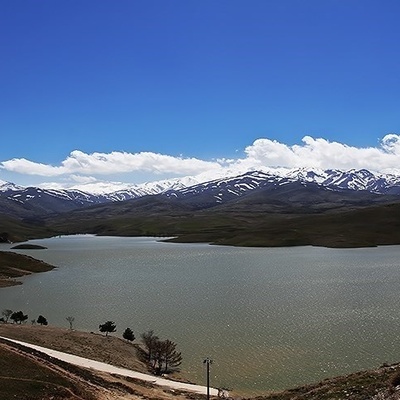SAEDNEWS: The Shams al‑Emareh Edifice, a seven‑story Qajar‑era tower standing nearly 35 metres tall within Tehran’s historic Golestan Palace at 15 Khordad Square, served as the capital’s first high‑rise landmark.

Shams al‑Emareh is one of the historic buildings of old Tehran. Once among the tallest structures in the Iranian capital, it stands within the grounds of Golestan Palace.























Shams al‑Emareh is one of Tehran’s most important sights, forming the eastern wing of the historic Golestan Palace complex. To visit this emblem of the capital’s Qajar‑era modernity, head to District 12 in the old bazaar area and enter Golestan Palace. Note that many of the surrounding streets—such as Bab Homayun, Sabzeh Meydan, Davar and Sohrāʾsarāfil—are pedestrianized and paved with stone.
Address: 15 Khordad Street, northern side of 15 Khordad Square (Arg Square), Golestan Palace, Tehran
Public relations office: +98 21 3395 6662
By Metro: Disembark at the 15 Khordad Station on Line 1. From the platform, head east and walk along the stone‑paved Davar Street until you arrive at Golestan Palace and the majestic Shams al‑Emareh tower.
By Bus: Lines serving Imam Khomeini and Ghorukhāneh terminals will also drop you within a short walk of the palace gates.

Under Qajar king Nāser al‑Dīn Shāh’s fascination with tall European edifices and lavish ornament, he commissioned his treasurer and mint director, Dust‘Ali Khan Nezām‑ol‑Dowleh, to erect a lofty vantage point overlooking Tehran. Design fell to the court architect Ma‘īr‑ol‑Mamālek, with master builder ‘Alī Mohammad Kāshī overseeing construction.
Construction began in 1244 SH (1282 AH) and concluded two years later in 1246 SH (1284 AH).
Total cost for building, furnishing and decoration reportedly amounted to 40,000 tomans.
Upon completion, Shams al‑Emareh was inaugurated in 1284 AH as Tehran’s tallest structure and symbol of the Qajar capital—predating the National Garden gate and earning its nickname the “Sun of the Royal Palaces.”

The tower, also known as the “Kakh‑e Shāhan‑shāh” or “Palace of the Emperor,” rises to about 25 metres over five floors (30 metres including its rooftop pavilion). As Iran’s first metal‑framed structure, it represented a fusion of traditional brick, mud‑plaster and sarooj mortar with cast‑iron columns. Wooden pitched floors and roof trusses support each level, while the steep 40–45 cm‑high steps link the tiers. Shams al‑Emareh embodied Nāser al‑Dīn Shāh’s vision of a European‑styled skyscraper in the heart of Persia.





As Golestan Palace’s eastern landmark, Shams al‑Emareh’s symmetrical façade features twin side towers flanking a central block. The interior dazzles with intricate plasterwork, mirror‑mosaics, tile panels and painted scenes blending European and Iranian motifs. On the first floor, the marble‑lined iwan (hall) and reception salons boast seven‑colour Qajar tiles depicting European landscapes. A grand marble staircase leads to the rooftop, which the shah used for court ceremonies and to survey the city.















Today, only the ground floor is open as a public museum. Exhibits include period photographs of Golestan Palace, royal ceremonies, and archival Qajar‑ and Pahlavi‑era documents and correspondence.




The mansion’s plan reflects Qajar‑era innovations: five storeys connected by steep steps, wooden latticed windows, and a central hall with surrounding rooms. Its metal skeleton allowed greater internal spans and higher elevations than traditional carpentry would permit.

Perched atop the pavilion sits Tehran’s first public clock—a two‑faced timepiece gifted by Queen Victoria to Nāser al‑Dīn Shāh in 1876 (1252 SH). For over 150 years its bell marked the hours across the capital. After falling silent around 1304 SH, it was restored in 1389, 1391 and 1397 SH, then fully reactivated in spring 1400 SH under the care of veteran horologist Mohammad Sa‘atchi. Though its chimes once disturbed palace life—leading court eunuchs to silence the bell—the clock remains a potent symbol of Tehran’s modernization.
In classical Persian, shams al‑emāreh means “Sun of the Edifice.” Situated at Golestan’s eastern extremity, where the sun rises over the royal precinct, the name captures both its lofty prominence and its dazzling tile and mirrorwork that glint like sunlight.
Open daily except on official holidays and mourning dates (14 Khordad, 21 Ramadan, 9–10 Muharram, 20 & 28 Safar, 25 Shawwal and 13 Farvardin).
First half of the year: 09:30 – 18:30
Second half of the year: 09:00 – 17:00
Domestic visitors: 4,000 toman
International visitors: 50,000 toman

